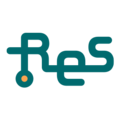General description of WEpods project
Robot Engineered Systems (RES) is developing self-driving shuttle buses called WEpods. In the last few years, we developed software for two WEpods. They are driving at Weeze airport in Germany and Wageningen University campus, in mixed traffic on public roads. Those WEpods are small, 6 person shuttles that drive at limited speed (max 25km/h). The fact that we have a permission to test and operate on public roads makes us quite unique in The Netherlands, the EU, and even worldwide. Currently, we are in the process of building our new, next generation autonomous shuttle bus, as part of the EU subsidized Interreg Automated Transport project. It will be equipped with several cameras, radars, and lidars to provide a clear perception of the world around us. The bus will have space for 16 persons and our goal is to make it drive autonomously up to 50km/h. This increase in speed from 25km/h to 50km/h requires improvements at practically all levels of our current hardware and software stack.
Robot Engineered Systems is part of Robot Robots Company and has two sister companies called Robot Care Systems and Robot Security Systems, respectively developing an elderly care robot and a security robot. Robot Robots Company is a young, fast growing scale-up company, with lots of interesting development projects going on. We all work in the same building, so you will be part of an inspiring and fun engineering team. We are located in Delft, close to the TU Delft and next to the busstop on the rotterdamseweg.
Project description:
The localization of our autonomous vehicle is based on combining high precision GPS (RTK GPS) with Lidar-based localization in a point cloud map. At times this localization can have big uncertainties in the lateral placement of the vehicle. In such a case we want to use a lane-relative localization. A previous student has developed a camera-based detection of the lanes and road sides for this localization. The next step is to improve the reliability of the algorithms. To this end, the sensors need to be properly calibrated first. Then, there are different options to improve the performance. One possibility is to use Lidar data, by looking at the intensity of the laser reflection. Another is to move towards a deep learning approach for our camera-based localization. Furthermore, the semantic map can be used to filter out the relevant regions. The results can be tested in simulation and on the real vehicle. The internship will be done using Ubuntu Linux, ROS (Robot Operating System) and the Carla simulator. Python is the main programming language, though work can be done in C++ too.
